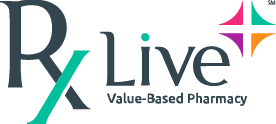For a recent piece on this blog, we spoke with veteran pharmacy leader Ernie Anderson about how to handle requests from the C-suite to slash pharmacy budgets. This time around, we asked him about how to take a more proactive approach to transforming a health system’s pharmacy function from a cost center to a revenue driver.
When that happens, it becomes easier for CPOs to advocate for the resources they need, which makes life better for everyone. Ernie laid out a five-part approach that pharmacy leaders in any health system can take to improve their discipline’s financial performance:
- Deliver care in the right setting.
- Get pharmacy leaders involved in reimbursement conversations.
- Manage prescription costs.
- Streamline pharmacists’ work.
- Consistently bill for fee-for-service work.
Let’s take a closer look at each.
1. Deliver care in the right setting
These days, most healthcare systems have risk-based contracts with insurers. This means they receive a flat fee for care based on a patient’s condition and the incentive lies with the healthcare system to deliver care in the most cost-effective way possible – often in outpatient settings.
Because risk contracts are now common, most health systems have shifted their care delivery models to prefer outpatient settings to inpatient in many situations. But in some cases, the system can further optimize reimbursement by scrutinizing the pharmacy component of care delivery.
One classic example is oncology drugs, which often have to be delivered as infusions. Whereas hospitals are only compensated on a DRG basis, outpatient clinics are often reimbursed at a higher rate for these expensive medications. Crucially, the outpatient experience is just as good for those receiving care.
Again, most health systems are already thinking in these terms. The biggest opportunity lies in those systems where CPOs or pharmacy directors have not yet been part of strategic care delivery conversations. If that’s the case in your health system, it’s time to ensure pharmacy has a seat at the strategy table.
2. Get pharmacy involved in reimbursement conversations
We mentioned this in our last piece, but it’s worth a mention here, as well.
In a typical health system, managed care teams negotiate reimbursement rates with insurance providers. But in many cases, managed care professionals don’t have any pharmacy experience.
This can lead to problems down the road, especially when the executive team is looking for places to slash costs.
The way to solve this problem, according to Ernie, is for pharmacy leaders to get to know the managed care team and to advocate to be included in drug reimbursement negotiations with insurers. The managed care team may welcome the support, as having guidance from experts will make their job easier.
During reimbursement negotiations, one of the most important things to pay attention to is inpatient vs. outpatient reimbursement. Those numbers will help guide policies around which settings make the most sense for administering which drugs.
3. Minimize unnecessary spend on drugs
Pharmacy is unlike most other health system functions in that personnel only accounts for about 25 percent of costs. The other 75 percent is drugs. This means that, to an untrained eye, cutting spend on drugs may look like a great way to get the pharmacy function out of “cost center” status.
The reality, of course, is more complex.
For one thing (as we discussed in our last post), some higher-cost drugs, like those used in oncology treatments, also have high reimbursement rates when administered in outpatient settings. In many health systems, outpatient oncology clinics can actually be an efficient, convenient, and cost-effective way to deliver care – a win-win.
But most health systems also have plenty of opportunities to reduce costs by minimizing unnecessary drug spend. The two most powerful actions here are:
- Replacing brand-name drugs with generics
- Deprescribing
The first is often a matter of communication: pharmacists can guide physicians on, say, which ACE inhibitor to prefer based on cost for each provider plan. In the old days, Ernie said, he’d create “cheat sheets” on 8.5 x 11 sheets of paper and tack them up in every clinic office and physician practice to guide providers on which medications to prescribe in which circumstances.
Today, of course, that communication can be handled digitally.
As for deprescribing, that’s also gotten easier since the late 1990s and early 2000s.
With analytics tools like rxlive.ai, pharmacists can automatically identify patients most likely to be over-prescribed, then work with primary care providers to identify opportunities to deprescribe.
Scaling the use of generics and deprescribing can not only save money on the front end; it can also help reduce hospital admissions and readmissions caused by nonadherence (which accounts for more than four percent of admissions) and adverse drug reactions (which account for about nine percent).
4. Help pharmacists automate and streamline their work
We’ve all no doubt heard the “do more with less” credo at some point in our careers. Until recently, though, pharmacists haven’t had access to the kind of custom-built software that has transformed so much of, say, office work.
But RxLive uses big data and AI to streamline the kind of work that pharmacy leaders like Ernie spent their careers doing manually. Adopting software to streamline clinical pharmacists’ work can empower them to more efficiently…
- Empanel patients.
- Identify those most at risk for hospitalization and other adverse events.
- Deliver one-on-one consultations to help reduce patient risk, individually and at scale.
In addition to helping pharmacists “do more with less,” RxLive can help the pharmacy function do more, period.
5. Deliver value-added service lines
Most of what we’ve outlined so far deals with managing costs in the pharmacy. But to truly make the leap from cost center to revenue driver, pharmacy also has to enable the system to bring in real revenue.
As we hinted earlier (and discussed in our last conversation with Ernie), some of that revenue can come from strategically administering medications in the most cost-effective setting.
But there are other ways to drive revenue via pharmacy services.
One of the most effective for many health systems is to embed pharmacy services in existing outpatient settings. For example, adding a pharmacist to an outpatient asthma clinic means that, after an initial visit with a physician, patients can meet with the pharmacist for follow-ups as they get to goal.
When physicians are handling fewer follow-up visits, they can increase their patient panel, meaning the system can bring in more revenue in a risk-based, PMPM model.
Another opportunity to drive revenue via pharmacy is to tap into a virtual fractional network of pharmacists (like the one RxLive offers) to deliver care to patients who might not be able to come into a physical location. Making pharmacists available to consult with at-risk patients via phone or video chat can improve health outcomes, which can make health systems eligible for bonus pay.
For example, these conversations can help patients understand why and how to take their medications correctly and give pharmacists a window into potential risk factors for nonadherence and adverse events. And thanks to the fractional network model RxLive makes available, health systems can gain all these benefits without hiring any new FTEs.
Rethink pharmacy and everyone wins
Health systems are enormously complex entities, and they’re only becoming more so. That can make it challenging for pharmacy leaders to advocate for the resources they need in a way that makes financial sense for the health system overall.
The reality, though, is that what’s good for the pharmacy function is good for patients, and what’s good for patients is good for the system overall. When pharmacy leaders are familiar with the framework for transforming pharmacy from a cost center to a revenue driver, they can more effectively fight for and secure the resources they need to deliver better care to all patients.




